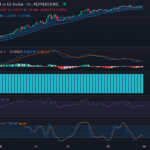
In-Depth Look into the Bullish Momentum of GBP/USD: A Forex Market Research – 16/04/2025
Tháng 4 15, 2025US Import Prices Decline as NY Fed Manufacturing Index Rises
Tháng 4 16, 2025Analyzing the Current Economic Landscape of Japan: Growth Prospects and Challenges
Japan’s economic outlook is a topic of considerable interest as recent data has painted a nuanced picture of its current state. While some indicators suggest resilience, others point towards potential stagnation as external factors play increasingly significant roles. In this blog post, we delve into the critical economic indicators from Japan, focusing on core machinery orders, growth forecasts, inflation, monetary policy, and labor market dynamics.
Core Machinery Orders: A Positive Sign Amidst Uncertainty
In February, Japan reported a 1.5% year-over-year increase in core machinery orders, surpassing projections that had anticipated a decline of 0.9%. Although this figure is a decline from the previous month’s impressive growth of 4.4%, it still reflects a degree of optimism about Japan’s manufacturing sector. This positive momentum in core machinery orders suggests that businesses are willing to invest in capital goods, which typically indicates confidence in future demand. Such investment is crucial for sustaining economic growth, especially as Japan grapples with structural shifts in its economy.
Economic Growth Outlook: Pressures from External Factors
Despite the favorable machinery orders, the broader forecast for Japan’s economic growth appears cautious. Financial institutions like Vanguard and Citi have adjusted their growth expectations, anticipating less than 1% GDP growth by year-end 2025. This expected slow growth is significantly influenced by rising U.S. tariffs, with UBS indicating these tariffs could potentially halve Japan’s GDP growth, leading to a reduction of 0.8 percentage points. Citi further revised its growth forecast down to 0.9%, down from a previous estimate of 1.4%, highlighting the vulnerability of Japan’s economy to international trade dynamics. For a deeper understanding of how global trade impacts economic forecasts, you can read about strategic moves by China and their influence on regional economies in this blog post.
Inflation Trends and Monetary Policy Considerations
When it comes to inflation, core inflation predictions suggest stability around 2% through 2025. This is being spurred largely by increasing wage growth and ongoing labor shortages, which have been consistent issues in the Japanese labor market. As wages rise, consumer spending is expected to receive a boost, forming a crucial component in maintaining economic stability. However, these rising pressures may also influence the Bank of Japan’s approach to monetary policy. Notably, some analysts predict that the Bank of Japan may delay any potential interest rate hikes, with increases possibly not on the agenda until 2026. This cautious monetary stance is reflective of both domestic economic pressures and the current uncertainty in global trade relations.
Labor Market Dynamics: A Dual-edged Sword
Japan continues to face structural labor shortages, resulting in significant wage increases—averaging 5.37% in certain sectors. While this wage growth can positively impact consumer spending and stabilize the domestic economy, it also underscores the challenges posed by an aging population and a shrinking workforce. The need for reforms in labor and immigration policies is becoming increasingly urgent to mitigate these structural issues and stimulate sustainable growth. Moreover, to avoid common investment mistakes amidst this complex landscape, it is beneficial for investors to remain disciplined. For insights into investment pitfalls, refer to this blog post.
In conclusion, Japan’s current economic landscape reveals a complex blend of resilience in certain sectors, juxtaposed against external pressures from trade dynamics and the inherent challenges of a structural labor market. As Japan navigates these turbulent waters, the interplay between domestic consumption, inflation, and global trade relationships will be pivotal in shaping its economic trajectory for the years to come. Stakeholders and policymakers will need to remain vigilant and adaptive to keep Japan’s economy on a path toward recovery and growth in the face of mounting uncertainties. To further understand the breadth of investment decisions in such fluctuating conditions, examining common investment mistakes can provide valuable perspectives. Take a look at this blog post for more detail.
